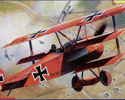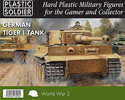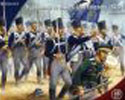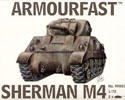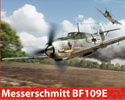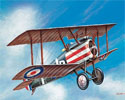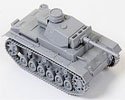The First World War - Naval Race
Naval Race
When Wilhelm II became Emperor of Germany he desired to extend the boundaries of the German Empire overseas and establish colonies in Africa, the Middle East and the Far East.
To do this Germany needed a strong navy. There was a series of laws passed in Germany to support this objective but they initiated a strong reaction from Great Britain, who was very heavily dependent on imports from her global colonies.
1898 The German Navy Laws
1906 HMS Dreadnought
The German Navy Laws
The German Navy Laws were actually four separate laws passed in 1898, 1900, 1908 and 1912. They were intended to support to policies of the Kaiser Wilhelm II and the Grand Admiral Alfred von Tirpitz, head of the German Imperial Navy.
Initially these laws were intended to produce a Navy that was defensive in nature, but the second law of 1900 actually specified that the navy should be capable of competing with the Royal Navy on at least a one to one basis. By 1914 the German Fleet was around 60% as big as the Royal Navy; but, with not having such a large Empire to patrol and defend, the two navies were probably on about equal terms in the critical North Sea area.
This was taken to be a direct challenge by the British Government, who initiated a building program to keep the Royal Navy ahead of the Germans. The British public were actively involved in this and formed a Navy League to campaign for more ships.
1906 HMS Dreadnought
Admiral Sir John (Jackie) Fisher was the First Sea Lord from 1905 to 1910 and it was he who pushed for the introduction of the Dreadnought class of battleship and later for the introduction of Battlecruisers.
In 1906 HMS Dreadnought, the first of a class of new battle ships, was launched. This vessel revolutionised the design of battleships and effectively made all others obsolete overnight.
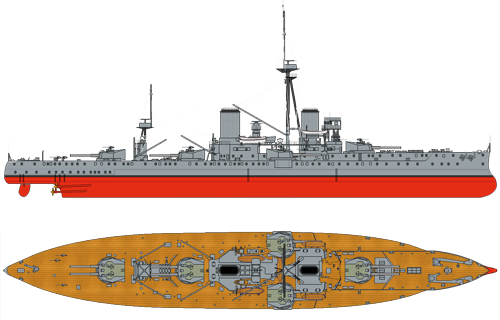
The class concentrated firepower in ten twelve inch main guns and was driven by an oil fired turbine engine that could push the ship along at up to 21 knots. Previous battleships carried many guns of various calibres to engage the enemy at different ranges. The Dreadnought could engage at long ranges with nearly all of her guns. Some smaller guns were retained for close engagements, but these were minimal compared to previous ships.
The steam turbine engine was a radical departure from previous power plants. It relied on a jet of steam turning a turbine at high speed. It was lighter and had less moving parts than the piston engines of earlier ships and could achieve higher speeds. This meant that the Dreadnoughts could pick and choose the moment of engagement and disengage very quickly if necessary. It also meant that more weight could be dedicated to the armour protection.
Battlecruisers
The Battlecruiser concept was intended to deliver a relatively cheap vessel that combined the firepower of a Battleship with the speed of a cruiser. Speed was a critical issue when policing a large maritime empire and having to chase pirates and raiders across vast oceans.
The extra speed was achieved by implementing lighter armour plating to reducing the weight. This gave Battlecruisers a distinct disadvantage when pitched against Dreadnoughts and it was to prove disastrous in some of the Naval battles of World War One and later in World War Two.
How did the Naval Race contribute to the outbreak of World War One?
It created tension, competition and distrust between Germany and Great Britain
Germany became a perceived threat to the British Empire's overseas colonies and trade routes. Great Britain reacted by aligning more closely with France and Russia with the signing of the Entente agreements.
